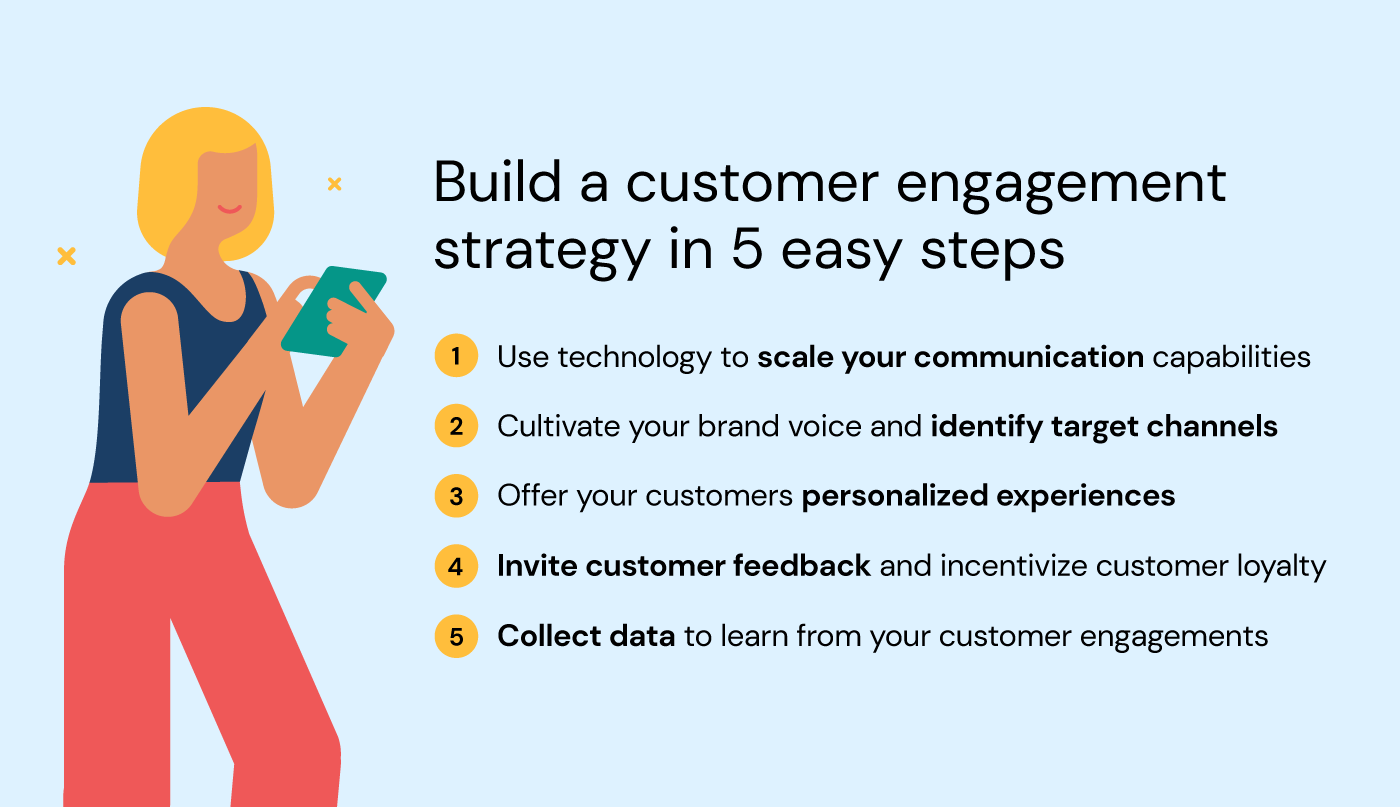In today's attention economy, the siren song of viral fame lures many brands into chasing fleeting moments of online glory. The allure is understandable – who wouldn't want their content to be shared by millions and celebrated as a cultural touchstone?
I've seen firsthand how the obsessive pursuit of virality can lead brands astray, sacrificing long-term strategic goals for short-term vanity metrics. In this post, I'll make the case for why building sustained audience engagement is a far more valuable and reliable path to marketing success than going viral.

The Viral Temptation
It's easy to see why brands get seduced by the prospect of viral stardom. In a crowded digital landscape, the idea of capturing lightning in a bottle and riding a sudden wave of massive exposure is undeniably attractive. Viral case studies like Old Spice's “The Man Your Man Could Smell Like” campaign or Wendy's Twitter snark are held up as pinnacles of marketing success, fueling FOMO among brands desperate to make their own splash.
However, this viral fixation often comes at a steep cost. In the scramble to craft the perfect shareable content, brands can lose sight of their core values, voice, and audience. They may resort to cheap gimmicks or controversial stunts in an attempt to generate buzz, only to see their efforts backfire or fail to connect. Even when a campaign does manage to go viral, the impact is often short-lived and difficult to replicate. Viral fame is fickle and unpredictable, at the mercy of algorithms and the whims of online audiences.
| Viral Marketing Misconception | Reality |
|---|---|
| Viral success is a matter of luck | While luck plays a role, viral success often stems from strategic planning, audience understanding, and adaptability |
| Viral fame automatically translates to business success | Viral attention rarely leads to sustained business outcomes without a plan to convert buzz into meaningful engagement |
| Any brand can go viral with the right content | Viral potential depends heavily on a brand's existing audience, industry, and alignment with trending topics or sentiments |
| Viral success is easily replicable | The unpredictable nature of viral trends and audience preferences makes it challenging to consistently recreate viral hits |
Moreover, the very nature of viral content consumption works against lasting engagement. People share and move on quickly, rarely taking the time to investigate the brand behind the meme or form any meaningful connection. Virality is a numbers game, racking up views and shares from casual observers rather than loyal customers. It's the marketing equivalent of empty calories – a quick burst of attention that does little to nourish long-term brand health.
The Hidden Costs of Viral Pursuit
Chasing viral hits can lead brands down a perilous path, sacrificing authenticity and strategy for momentary hype. The pressure to create share-worthy content can result in increasingly outrageous or off-brand stunts, eroding hard-earned credibility and trust. Brands risk being seen as trying too hard, pandering, or out of touch with their core audience.
| Viral Marketing Pitfall | Potential Consequences |
|---|---|
| Inauthentic or off-brand content | Erosion of brand trust and credibility |
| Over-investment in viral attempts | Neglect of core marketing initiatives and customer needs |
| Controversial or insensitive content | Backlash, boycotts, and long-term reputational damage |
| Failure to plan for viral success | Inability to capitalize on momentum or retain new audience |
| Overemphasis on vanity metrics | Misleading perception of campaign success and ROI |
This viral arms race also diverts resources away from other critical marketing functions. When the bulk of a brand's budget and creative energy is funneled into potential viral blockbusters, other key initiatives like customer research, product development, and loyalty programs can suffer. The opportunity cost is significant, as brands miss out on building sustainable competitive advantages in favor of chasing fleeting trends.
Moreover, the audiences drawn in by viral content tend to be fickle and distracted. They may consume and share a brand's content in the moment, but they have little incentive to stick around or dig deeper. Viral fame rarely translates into long-term loyalty or advocacy, as audiences move on to the next shiny object in their feeds. Brands that rely too heavily on viral buzz may find themselves trapped in a cycle of diminishing returns, struggling to hold onto their momentary gains.

The Engagement Edge
So, if virality is a false idol, where should brands focus their marketing efforts? The answer lies in building sustained audience engagement – creating ongoing, mutually rewarding relationships with customers that deepen over time. By shifting focus from fleeting attention to lasting connection, brands can tap into a wellspring of enduring value.
| Engagement Metric | Definition | Importance |
|---|---|---|
| Customer Lifetime Value (CLV) | The total worth of a customer to a brand over the course of their relationship | Measures the long-term financial impact of customer loyalty and advocacy |
| Net Promoter Score (NPS) | The likelihood of customers recommending a brand to others | Indicates the strength of customer relationships and organic growth potential |
| Customer Retention Rate | The percentage of customers who continue engaging with a brand over time | Reflects the brand's ability to sustain customer relationships and minimize churn |
| Engagement Rate | The level of audience interaction with a brand's content or experiences | Shows the effectiveness of a brand's engagement efforts and resonance with target audience |
| Customer Satisfaction Score (CSAT) | The degree to which customers are satisfied with a brand's products or services | Demonstrates the brand's ability to meet customer needs and expectations |
Consider the example of Glossier, the beauty brand that has cultivated a fiercely loyal following through its commitment to customer engagement. Rather than chasing viral moments, Glossier invests in understanding its audience's needs, desires, and pain points. It creates content and experiences that resonate on a personal level, inviting customers into an ongoing dialogue. From its Instagram comment pods to its active online community, Glossier has mastered the art of turning customers into lifelong brand ambassadors.
This engagement-driven approach pays off in spades. Engaged customers become repeat buyers, vocal advocates, and invaluable sources of feedback and insight. They help shape the brand's direction, co-create products, and spread authentic word of mouth. Over time, these relationships compound into a formidable competitive advantage, as the brand becomes deeply interwoven with its customers' identities and lifestyles.
Investing in engagement also insulates brands from the fickleness of algorithms and attention spans. While viral content is at the mercy of unpredictable external factors, a solid base of engaged customers provides a reliable foundation for long-term growth. Engaged audiences are more likely to stick with a brand through ups and downs, forgive occasional missteps, and champion the brand to their own networks.

Engagement Strategies That Work
So, how can brands build the kind of lasting engagement that drives real results? It starts with a deep understanding of the audience – their needs, preferences, behaviors, and motivations. This requires rigorous customer research, active listening, and a willingness to adapt based on feedback. Brands must go beyond surface-level demographics to uncover the emotional and aspirational drivers that underlie customer choices.
Armed with this insight, brands can craft content and experiences that resonate on a profound level. Rather than chasing trends or gimmicks, they focus on delivering authentic value aligned with their audience's interests and priorities. This might involve educational content that helps customers solve real problems, entertaining experiences that speak to shared passions, or exclusive perks that reward loyalty.
| Engagement Strategy | Examples | Benefits |
|---|---|---|
| Personalized Content | - Customized product recommendations - Targeted email campaigns - Dynamic website experiences |
- Increased relevance and value for individual customers - Higher conversion rates and customer loyalty - Improved customer insights and data collection |
| Interactive Experiences | - Quizzes and assessments - Augmented reality product visualizations - Gamified challenges and rewards |
- Enhanced customer participation and entertainment - Deeper brand immersion and memorable interactions - Opportunities for user-generated content and sharing |
| Community Building | - Branded social media groups - Customer forums and discussion boards - Exclusive membership programs |
- Fostered sense of belonging and peer-to-peer connections - Increased customer retention and advocacy - Valuable feedback and insights from engaged customers |
Crucially, engagement-focused brands prioritize two-way dialogue and community participation. They don't just broadcast messages; they invite customers to co-create, share their stories, and connect with each other. This might involve user-generated content campaigns, customer advisory boards, or online forums where fans can geek out over their shared love for the brand.
Engagement efforts should also be integrated across multiple touchpoints and channels, creating a seamless and cohesive brand experience. Each interaction, whether on social media, in-store, or through customer service, is an opportunity to strengthen the bond and create a sense of belonging. Consistency is key, as is the ability to personalize experiences based on individual preferences and behaviors.
To optimize engagement over time, brands must measure and analyze key metrics like customer lifetime value, retention rates, and net promoter scores. They should track sentiment and feedback across channels, using these insights to fine-tune their strategies. This requires a spirit of experimentation and continuous improvement, testing different content formats, frequencies, and distribution tactics to see what resonates best.
Finding the Sweet Spot
Of course, the pursuit of engagement doesn't mean brands should forsake the power of viral tactics entirely. There are situations where a well-crafted viral campaign can complement and amplify ongoing engagement efforts. The key is to approach virality strategically, as a means to an end rather than an end in itself.
When crafting potentially viral content, brands should focus on creating authentic, resonant experiences that also strengthen brand affinity and loyalty. The goal is to attract new audiences with share-worthy content, then convert those fleeting sparks of attention into ongoing relationships through thoughtful follow-up and community-building.
For example, when the New York Public Library launched its “Insta Novels” campaign, turning classic books into Instagram Stories, it went viral in literary circles. But the campaign didn't stop at momentary buzz. It used the viral attention to drive traffic to the library's e-book collection and spark ongoing conversations about the enduring relevance of classic literature. The viral moment became a gateway to deeper engagement with the library's mission and offerings.
| Brand | Viral Campaign | Engagement Outcomes |
|---|---|---|
| Dove | "Real Beauty Sketches" | - 50 million views in the first 12 days - 15,000 new subscribers on YouTube - Increased brand sentiment and loyalty |
| Warby Parker | "Buy a Pair, Give a Pair" | - Viral sharing of customer photos and stories - Ongoing user-generated content driving engagement - Strong brand advocacy and repeat purchases |
| Old Spice | "The Man Your Man Could Smell Like" | - 105 million YouTube views - 2700% increase in Twitter followers - Sustained brand popularity and cultural relevance |
Ultimately, the most successful brands find a way to balance viral tactics with long-term engagement strategies. They capitalize on viral moments to attract new audiences, then work diligently to convert those newcomers into loyal community members. They create share-worthy content that also reinforces brand values and invites ongoing participation.
While viral fame may offer a temporary rush of attention, it's rarely a sustainable path to long-term brand growth. The real marketing win lies in cultivating ongoing engagement – turning casual observers into loyal advocates, passionate participants, and lifelong friends.
This engagement-driven approach requires a shift in mindset and tactics. It demands a deep understanding of audience needs, a commitment to authentic value creation, and a willingness to invest in relationships over the long haul. It means prioritizing community-building over momentary hype, and measuring success in terms of sentiment and loyalty rather than just views and shares.
But for brands willing to do the hard work, the payoff is immense. By creating content and experiences that resonate on a profound level, fostering two-way dialogue, and integrating engagement efforts across touchpoints, they can build a loyal customer base that will stick with them through thick and thin. They can create a virtuous cycle of deepening relationships, co-creation, and advocacy that powers sustainable growth.
So to my fellow marketers, I issue this challenge: Let's resist the siren song of empty virality and focus on what truly matters – building flourishing audience relationships that stand the test of time. Let's create experiences that enrich people's lives, spark meaningful conversations, and turn customers into lifelong friends. That's the real marketing win – one that will far outlast the fleeting buzz of today's viral hit.
Key Takeaways
| Viral Tactics | Engagement Strategies |
|---|---|
| Unpredictable, short-lived impact | Reliable, compounding value over time |
| Often inauthentic or off-brand | Authentic, resonant, and on-brand |
| Draws fickle, distracted audiences | Builds loyal, committed communities |
| Sacrifices other marketing priorities | Integrates with holistic brand-building |
| Relies on algorithms and luck | Driven by deep customer understanding |
| Short-term vanity metrics | Long-term sentiment and loyalty |
- Focus on building sustained audience engagement over chasing fleeting viral fame
- Invest in understanding customers' deepest needs, desires, and motivations
- Create authentic, value-driven content and experiences that resonate emotionally
- Foster two-way dialogue and community participation across touchpoints
- Measure and optimize engagement efforts based on long-term sentiment and loyalty
- Use viral tactics strategically to attract new audiences, then convert them into engaged community members
By prioritizing lasting engagement over empty hype, brands can build the kind of passionate, loyal followings that power real, sustainable growth. The path may be longer and less glamorous than the pursuit of viral glory, but the rewards are far richer and more enduring. So let's focus on what really matters – creating profound connections, one customer at a time.
FAQ
- What is the main difference between viral marketing and engagement-driven marketing?
Viral marketing focuses on creating content with the primary goal of generating rapid, widespread attention, while engagement-driven marketing prioritizes building deep, long-lasting relationships with customers through meaningful interactions and value creation. - Why is chasing viral fame a risky strategy for brands?
Chasing viral fame can be risky because it often requires creating sensationalized content that may not align with a brand's values or target audience. Additionally, the unpredictable nature of viral success makes it an unreliable strategy for long-term growth. - What are some common pitfalls of viral marketing?
Common pitfalls of viral marketing include creating inauthentic or off-brand content, overinvesting in viral attempts at the expense of other marketing initiatives, and failing to plan for the challenges of viral success, such as managing sudden spikes in demand or engagement. - How can brands measure the success of their engagement-driven marketing efforts?
Brands can measure the success of engagement-driven marketing by tracking metrics such as customer lifetime value, net promoter score, customer retention rate, engagement rate, and customer satisfaction score. These metrics provide insights into the strength and quality of customer relationships. - What are some effective strategies for building lasting customer engagement?
Effective strategies for building lasting customer engagement include creating personalized content, offering interactive experiences, fostering community building, and consistently delivering value at every stage of the customer journey. - How can brands find the right balance between viral marketing and engagement-driven marketing?
Brands can find the right balance by creating share-worthy content that aligns with their values and target audience's interests while also incorporating elements that encourage deeper engagement and relationship-building. The key is to use viral tactics strategically to attract attention and then focus on converting that attention into long-term engagement. - What role does customer feedback play in engagement-driven marketing?
Customer feedback is crucial in engagement-driven marketing as it helps brands understand their audience's needs, preferences, and pain points. By actively listening to and acting upon customer feedback, brands can continually refine their engagement strategies and strengthen customer relationships. - How can brands create content that resonates with their target audience and encourages engagement?
To create content that resonates and encourages engagement, brands should focus on understanding their target audience's interests, challenges, and aspirations. By creating authentic, valuable content that addresses these factors and invites interaction, brands can foster meaningful connections with their audience. - What are some examples of brands that have successfully prioritized engagement over viral fame?
Examples of brands that have successfully prioritized engagement include Glossier, known for its highly engaged beauty community; Patagonia, which fosters a strong sense of shared values and customer loyalty; and Starbucks, which has built a thriving customer community through its rewards program and personalized experiences. - How can marketers convince their teams and stakeholders to shift focus from viral metrics to engagement metrics?
Marketers can build a compelling case for prioritizing engagement by highlighting the long-term benefits of strong customer relationships, such as increased customer lifetime value, improved customer retention, and organic brand advocacy. They can also point to case studies and industry research that demonstrate the sustainable impact of engagement-driven marketing compared to the fleeting nature of viral success.






